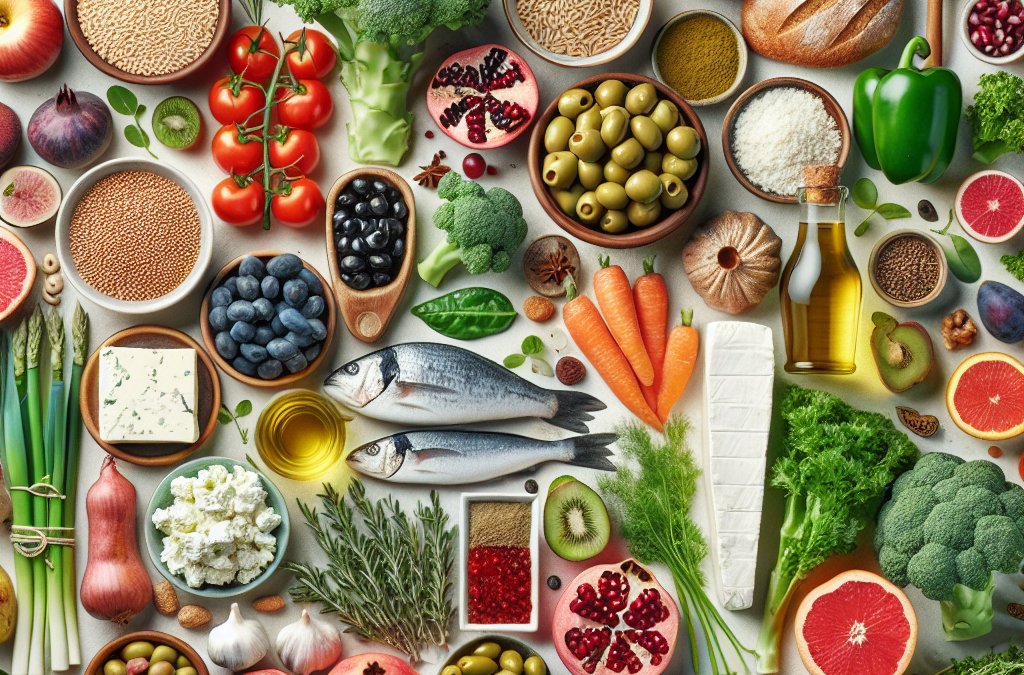Table of Contents
- 1. Berry Superfoods
- 2. Green Leafy Vegetables
- 3. Nuts & Seeds
- 4. Superfood Grains
- 5. Medicinal Mushrooms
- 6. Probiotic Foods
- 7. Plant-Based Oils
- 8. Ancient Legumes
- 9. Tropical Fruits
- 10. Herbs & Spices
1. Berry Superfoods
The Power of Berries in Your Diet
Berries like blueberries, acai, and goji are true champions among whole food superfoods. Rich in antioxidants, they help combat oxidative stress and reduce inflammation, which is vital for maintaining long-term health. In 2025, incorporating a handful of berries into your daily meals can significantly boost your immune system and support skin health.
These small fruits pack a punchâscientific studies show berries can improve cognitive function and lower the risk of chronic diseases such as heart disease and diabetes. For example, blueberry consumption has been linked to better memory and cognitive decline prevention, especially in aging populations.
Practical tips: Add berries to smoothies, oatmeal, or yogurt for a nutritious breakfast. Opt for organic berries when possible to avoid pesticides, and aim to consume a variety of colorful berries for maximum health benefits.
Varieties and Benefits
Not all berries are created equal, but each offers unique health benefits. Acai berries are high in anthocyanins, which help reduce inflammation, while goji berries are rich in vitamin C and immune-supporting antioxidants. Incorporating diverse types of berries ensures you receive a broad spectrum of phytonutrients.
Furthermore, berries are versatileâuse them in salads, desserts, or as a snack. Their natural sweetness makes them a healthy alternative to processed sugars, and they can help satisfy sweet cravings without compromising your health goals.
Stay tuned in 2025 for new superfood berry varieties emerging in organic markets, which can add variety and extra health benefits to your diet.
2. Green Leafy Vegetables
Why Green Leafy Vegetables Are Essential
Spinach, kale, chard, and collard greens are classic examples of green leafy vegetables, and they continue to be at the forefront of whole food superfoods in 2025. They are dense in nutrients like vitamin K, magnesium, iron, and fiber, making them indispensable for overall wellness.
Research indicates that consuming a variety of leafy greens can lower blood pressure, improve digestion, and support bone health. Their high chlorophyll content acts as a natural detoxifier, helping your body eliminate toxins efficiently.
Tip: Incorporate these greens into smoothies, salads, and stir-fries. Light steaming can enhance nutrient absorption while maintaining their vibrant color and flavor.
Maximizing Nutritional Absorption
To get the most out of your green leafy vegetables, pair them with healthy fats such as olive oil or avocado. This enhances the absorption of fat-soluble vitamins like A, D, E, and K. Also, rotating different greens prevents dietary monotony and ensures diverse nutrient intake.
In 2025, innovative farming techniques such as hydroponic greens and microgreens are making these superfoods even more accessible and nutrient-dense. Consider growing your own or sourcing from local organic farms to maximize freshness and quality.
3. Nuts & Seeds
Health Benefits of Nuts and Seeds
Nuts like almonds, walnuts, and pecans, along with seeds such as chia, flax, and sunflower, are rich sources of healthy fats, protein, and fiber. They help reduce bad cholesterol levels, improve heart health, and support brain function.
A daily handful of nuts or seeds can contribute to weight management and provide sustained energy. Their omega-3 fatty acids, particularly from walnuts and flax seeds, further promote cardiovascular health and reduce inflammation.
Tip: Incorporate nuts and seeds into oatmeal, salads, or snack mixes. Remember to choose raw or dry-roasted varieties to avoid added fats or salts.
Practical Tips for Incorporation
To maximize benefits, grind flax seeds or chia seeds before adding to foods for better digestion and nutrient absorption. Nut butters are also a tasty way to include these superfoods in your dietâspread on toast or blend into smoothies.
In 2025, sustainably sourced and organic nuts and seeds are more accessible, ensuring you get pure, high-quality options to boost your health naturally.
4. Superfood Grains
Power of Ancient and Modern Grains
Quinoa, amaranth, millet, and oats are prime examples of superfood grains that deliver complex carbs, fiber, and essential amino acids. These grains are excellent for stabilizing blood sugar and providing sustained energy throughout the day.
As more people seek gluten-free options, superfood grains like quinoa and millet are gaining popularity in 2025. They are also rich in minerals such as magnesium, zinc, and iron, supporting metabolic health and immune function.
Tips: Use these grains as a base for salads, breakfast bowls, or side dishes. Cooking them properly enhances digestibility, and combining with vegetables and lean proteins creates balanced meals.
Tips for Incorporation & Storage
Try substituting traditional rice or wheat with these gluten-free grains a few times per week. Store in airtight containers in a cool, dry place to preserve flavor and nutrients. Experiment with sprouting or fermenting grains to unlock even more nutrients in 2025.
Integrating a variety of superfood grains into your diet is a practical step toward enhanced health and diversity in your nutrition.
5. Medicinal Mushrooms
The Immune-Boosting Power of Mushrooms
Reishi, maitake, shiitake, and lionâs mane mushrooms are celebrated in 2025 as potent whole food superfoods because of their immune-enhancing compounds and adaptogenic properties. These mushrooms have been used in traditional medicine for centuries and are gaining recognition worldwide.
Modern research confirms that medicinal mushrooms support immune regulation, reduce inflammation, and improve mental clarity. For instance, lionâs mane has been linked to neurogenesis, potentially improving memory and cognitive function.
Usage tips: Incorporate dried or powdered medicinal mushrooms into teas, broths, or capsules. Always source from reputable suppliers for purity and potency.
Health and Wellness Benefits
Adding medicinal mushrooms to your diet in 2025 can help you manage stress, balance immune function, and enhance overall vitality. Many health-conscious consumers now seek mushroom extracts or whole foods as part of their daily health routines.
Experiment with mushroom-based recipes or supplement regimensâjust ensure to consult health professionals if you have underlying conditions or are on medication.
6. Probiotic Foods
Gut Health with Fermented Foods
Fermented foods like kimchi, sauerkraut, kefir, and yogurt are rich in beneficial probiotics that support gut health, immunity, and even mood regulation. As awareness around the gut-brain axis grows in 2025, these foods are gaining even more popularity.
Including a variety of probiotic foods in your daily routine can improve digestion, nutrient absorption, and reduce inflammation. The balance of microbiota is essential for preventing chronic illnesses and enhancing mental clarity.
Huge Discount on the Best Certified Organic Whole Food Supplement!
Tips: Start with small servings to gauge your body’s response, and choose unpasteurized, minimally processed options whenever possible.
Practical Advice for Daily Use
Combine probiotic foods with prebiotic fibers like garlic, onions, and asparagus to nourish your gut microbiome. Making your own fermented foods at home can be rewarding and cost-effective in 2025, ensuring you get fresh, live cultures.
Incorporate these foods into salads, smoothies, or as side dishes to optimize your gut health naturally.
7. Plant-Based Oils
Healthy Fats from Natural Oils
Extra virgin olive oil, avocado oil, and cold-pressed coconut oil continue to be top whole food superfoods in 2025. They provide essential fatty acids, support cardiovascular health, and serve as natural anti-inflammatory agents.
Choosing unrefined, cold-pressed oils ensures you retain the highest nutrient profile. These oils are versatileâperfect for dressings, cooking, or drizzling over dishes.
Tips: Use olive oil for salads, avocado oil for high-heat cooking, and coconut oil for baking or topical uses. Moderation is key, as oils are calorie-dense.
Maximizing Benefits & Best Practices
Incorporate a variety of plant-based oils to balance your intake of omega-3, omega-6, and medium-chain triglycerides. Look for brands that prioritize organic, sustainable sourcing.
In 2025, innovations in extraction and refining methods help preserve the natural antioxidants and phytochemicals within these oils, making them even more potent in your diet.
8. Ancient Legumes
Reviving Traditional Legumes for Modern Health
Types like lentils, chickpeas, black beans, and mung beans are gaining renewal in 2025 as vital whole food superfoods. They are rich in fiber, plant-based protein, and essential mineralsâmaking them excellent for heart health and blood sugar regulation.
Eating more ancient legumes can help reduce reliance on processed foods and support sustainable agriculture. They’re also a good source of prebiotics, feeding beneficial gut bacteria.
Usage tips: Use in soups, stews, salads, and hummus. Proper soaking and cooking improve digestibility and nutrient absorption.
Sustainability & Practical Tips
Choosing locally-grown, organic legumes reduces environmental impact and offers fresher, more nutritious options. Incorporate them into your weekly meal plan to enjoy their health benefits and support eco-friendly farming practices.
For variety, try sprouting or fermenting legumes for added digestibility and nutrient boosts in 2025.
9. Tropical Fruits
Exotic Fruits for Nutritional Diversity
Mangoes, papayas, pineapples, and passion fruits remain popular in 2025, offering vibrant flavors and potent antioxidants like vitamin C, carotenoids, and polyphenols. They help strengthen immunity and promote healthy skin.
These fruits are also excellent for digestion due to their natural enzymes and fiber content. Their high water content helps keep you hydrated, especially in warmer months or climates.
Tips: Incorporate tropical fruits into smoothies, fruit salads, or enjoy fresh slices as snacks. Organic, pesticide-free options ensure maximum health benefits.
Benefits & Creative Uses
Though tropical fruits are naturally sweet, they can be part of a balanced diet by combining with protein-rich elements or healthy fats. In 2025, new superfruit hybrids and dried versions are making their way to markets, offering even more variety.
Explore recipes like tropical smoothie bowls or grilled fruit snacks for a delicious way to boost your intake of whole food superfoods.
10. Herbs & Spices
Flavorful & Healing Whole Food Superfoods
Turmeric, ginger, cinnamon, and holy basil are powerful herbs and spices with anti-inflammatory, antioxidant, and immune-boosting properties. In 2025, their use is expanding from culinary to functional health practices.
Adding these herbs and spices to your cooking can help you reduce reliance on processed seasonings and support overall well-being. Turmeric, for example, contains curcumin, which has been studied extensively for its health benefits.
Usage tips: Include turmeric in curries, ginger in teas, and cinnamon in oatmeal or baked goods for tasty health boosts. Fresh herbs are generally more potent and aromatic.
Practical Tips & Benefits
Use herbs and spices strategically to reduce inflammation, improve digestion, and enhance flavor without extra calories. In 2025, herbal supplements and extracts are also popular for targeted health benefitsâjust ensure quality sourcing.
Incorporate a variety of herbs daily to experience their cumulative health effects naturally and deliciously.
Conclusion
As we look ahead to 2025, incorporating the top 10 powerful whole food superfoods into your daily routine can significantly enhance your health and vitality. From antioxidant-rich berries to immune-boosting medicinal mushrooms, these superfoods are proven to support your well-being naturally. By focusing on variety, quality, and sustainable sources, you can harness the full potential of these nutrient-dense foods and enjoy lasting health benefits. Remember, making whole food superfoods a core part of your diet is one of the most effective ways to achieve optimal wellness in 2025 and beyond.
Frequently Asked Questions
1. What are whole food superfoods?
Whole food superfoods are nutrient-dense foods that are minimally processed and contain a wide range of vitamins, minerals, antioxidants, and phytochemicals beneficial for health. They include fruits, vegetables, nuts, seeds, grains, and medicinal fungi, among others.
2. How can I incorporate more whole food superfoods into my diet?
Start by adding colorful fruits and vegetables to every meal, swap refined grains for superfood grains like quinoa, include nuts and seeds as snacks, and experiment with herbs and spices. Gradually increasing variety makes it easier and sustainable.
3. Are whole food superfoods better than supplements?
Generally, yes. Whole food superfoods provide a complex array of nutrients that work synergistically, which is often more beneficial than isolated supplements. However, in some cases, supplements can support specific needs, but whole foods should be your primary source.
4. Why focus on whole food superfoods in 2025?
In 2025, the emphasis on whole food superfoods is driven by increasing research, consumer awareness of health, and sustainable farming practices. They offer natural, nutrient-rich options for preventing chronic diseases and supporting overall wellness.




